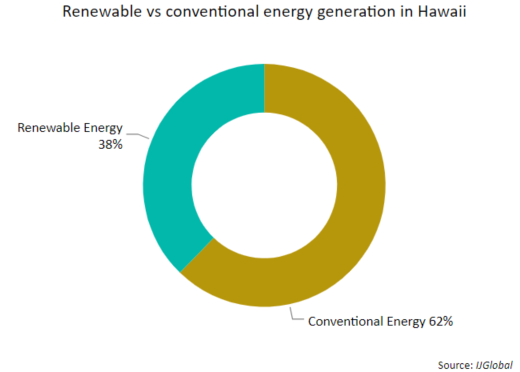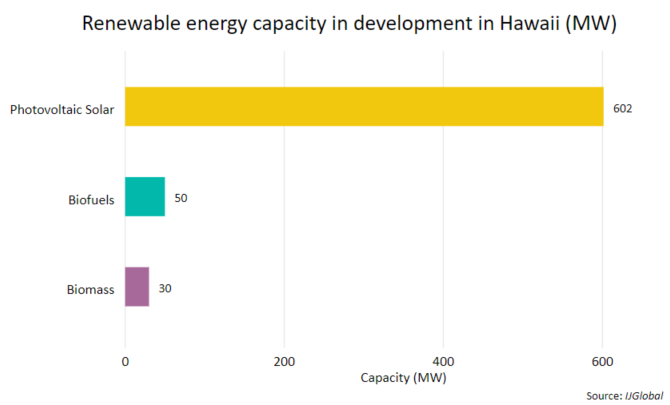Aloha to renewable energy
According to the Hawaii Clean Energy Initiative (HCEI) which was adopted in 2008, Hawaii is the most fossil fuel dependent state in the US. Being unreachable by trains or pipelines, the state spends billions of dollars per year importing oil to fuel its tourism industry and military bases.
The island state is determined to relieve its dependence on oil.
Under the HCEI, 100% of the electricity sold in the state must be produced from renewable resources by 2045. The latest data from IJGlobal suggest around 62% of the electricity in Hawaii is generated from conventional energy sources, such as oil and coal.
Hawaii has already made efforts to reduce fossil fuel consumption by decommissioning oil-fired projects such as the 113MW Downtown Honolulu plant and 15.2MW Shipman plant.
In April (2019), another major commitment was put forward when listed utility Hawaiian Electric Co (HECO) announced its determination to continue the transition from fossil-fuelled power generation to renewable energy. HECO’s Power Supply Improvement Plan (PSIP), approved by the Hawaii Public Utilities Commission, calls for achieving a 48% renewable portfolio standard (RPS) by 2020 and 100% by 2040, five years ahead of the HCEI deadline.
The utility is seeking roughly 900MW of renewable generation on Oahu, Maui and Hawaii Island, in what it claims is "among the largest single procurement efforts undertaken by a US utility", generating about 2,000GWh annually. Separately, proposals will be sought for two smaller islands, Molokai and Lanai, later in 2019.
The new generation will in part replace the output of the 180MW coal-fired AES Hawaii plant in Campbell Industrial Park on Oahu, which is set to close by September 2022, and the 37.6MW oil-fired Kahului Power Plant on Maui, scheduled to close by the end of 2024. The AES Hawaii plant is the largest fossil fuel plant on Oahu, meeting 16% of peak demand, while the Kahului plant is Maui's oldest oil-fired plant.
This renewables push is set to considerably increase solar energy’s share of the state’s energy mix. Solar is the second most-used power source in the state, largely due to some 662MW from customer-sited solar facilities, as reported by Hawaiian Electric.
Hawaiian Electric's resource plan includes the addition of:
- 594MW of solar generation on Oahu Island
- 135MW on Maui Island
- 32-203MW on Hawaii Island
The solar for Hawaii Island is being sought regardless of whether or not the 38MW Puna Geothermal Venture plant returns to service and the 30MW development-stage Hu Honua biomass plant comes online as planned. IJGlobal data shows that the biomass plant is part of a 680MW renewable portfolio developed in Hawaii outside of HECO’s plans. This generation capacity will further help the state to reach its green goal.
HECO’s priority list is to be confirmed by 3 January 2020, contract negotiations are scheduled to start on 1 May 2020, and the first projects are expected to be brought online in 2022.
Request a Demo
Interested in IJGlobal? Request a demo to discuss a trial with a member of our team. Talk to the team to explore the value of our asset and transaction databases, our market-leading news, league tables and much more.


